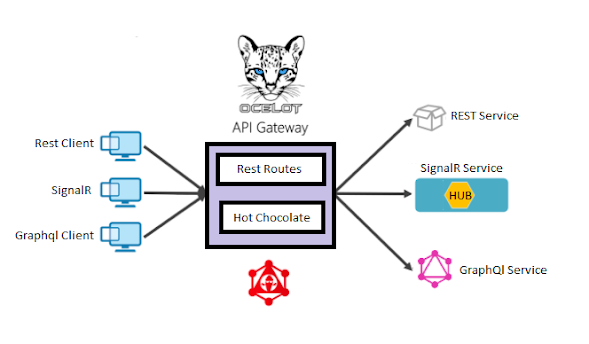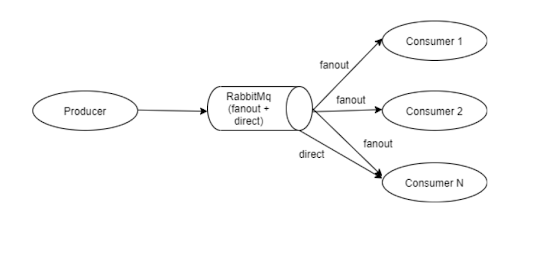REST VS GRAPHQL VS GRPC
I am seeing a lot of posts about GRAPHQL is going to replace the REST. From my experience, it might not happen. Rest replaced the SOAP because of content-type. Rest supported JSON. That is the big milestone in terms of performance using data transfer. Data transfer has been reduced a lot using JSON instead of XML. Here REST and GRAPHQL using JSON as data transfer. Both will support microservice architecture. The difference is GRAPHQL using queries as part of the post method for all type of CRUD.
Protocols and Verbs:
REST is using the HTTP protocol. Directly we can access from the browser. It provides HTTP verbs for a different type of CRUD operation. Graphql is also using HTTP protocol. We can access via the playground or simple post API from the postman. It provides different names like Query and Mutation of CRUD operation.
Authentication & Authorization:
In Microservices architecture we can keep Authentication and Authorization at the gateway level or services level, or API level based on the business and performance. It will be the same for Rest and GRAPHQL.
Interservice Communication (Resolver):
Data fetching from multiple services. Multiple services calls can be done at gateway using aggregation or we can add the logic at the corresponding services level.
If we are doing aggregation at the gateway, then the gateway becomes very heavy. The gateway should be a pass-through layer with authentication and authorization alone.
Some People will move the authorization to the corresponding services based on their needs. We can call one service from another one then microservice mesh with multiple API calls.
We can add a proxy to the microservices so the atomic operation will be done at microservice. Other service calls based on business logic will be held at the proxy. In this flow, the number of proxies will get increased.
We can add a message system to communicate with other systems. It will be a loosely coupled and asynchronous one. In case of reverse the transaction again we need to publish the message. we shouldn't guarantee on the message order it's getting processed. It will be the same for Rest and GRAPHQL.
Versioning:
No need for versioning While adding new fields. Versioning will be required while removing the existing fields or updating the data type or changing the parameter from not mandatory to mandatory. People are claiming versioning are not required as part of Graphql. I do not completely agree with this point. As an API provider, I can provide a Graphql API to multiple partners. If I'm going to remove one of the fields so one of my partners will have corresponding client implementation so API will be work for him. how about the rest of my partners? They will look for the fields that will be required one. Either we need to wait until all the partners consume the new implementation or we need to deliver a new API as part of the API provider.
URL:
REST we can have different resource name with corresponding HTTP verbs. It will describe what action API is going to do. GRAPHQL we will have a simple POST API with different verbs like Mutation and query. Anyway, both will be the same in terms of functionality only difference is how the data is getting represent to the end-user.
Then where's the difference. It will be based on your business.
REST: We are building an application that will return the response as a big one. Consider IoT devices will return a lot of parameter as part of device status and configuration. In REST we can have simple endpoints like devices/status. It will return all the parameters. In terms of GRAPHQL, we need to pass the required parameter as part of the query. Then the query will become a big one. some of the APIs will get called very frequently and the response will be a big one. In this case, we can use the REST. We are having hashing in GRAPHQL so the query will get cached but resolving each field will have an impact in terms of performance how frequently we are calling and how big the response is.
GRAPHQL: We are building an application that will return responses from multiple services. Git hub will fetch user profile, repository they have access to, list of commits they have done. Using REST, we can aggregate the results from the microservices, but unwanted data is getting fetched also. Response size is getting increased data transfer also increased. In this case, we can use GRAPHQL. It will serve the response based on responsive designs. People will claim using ODATA we can achieve the same kind of queries in Rest. We can, but it will be useful for a single entity. If we are having queries for multiple entities on multiple services, then query complexity will get increased. Then we need to write the separate logic to parse the query to corresponding services. If we are enhancing the client without any breaking changes on the server-side. so, we can add GRAPHQL as a layer on top of the microservice or monolithic. It will increase the performance of data transfer between the client and the server by reducing the round trips.
GRPC: It's completely different from the above two. It uses http2 protocol. http2 supports bidirectional and multiplexing. That is the big improvement in terms of performance compare to http1 that is what the rest is using. It uses a binary protocol instead of JSON. data transfer as well as data parsing will be reduced a lot. We can't access directly using a simple URL. We need a GRPC client to access it. Performance-wise it's providing better results compare to the above two based on my azure app insights results. As an API provider, we can't provide GRPC to the partners. Because partners will have a different kind of client implementation like rest and Graphql. Google is working hard to improve the GRPC for its simple client implementation like REST. Once it's completed might be it will be tough for the above two. Anyway, Google needs to do some parsing logic to covey the results from the binary to text one. Might be it will be get compensated with the performance. We can use GRPC for internal service communication on top of the REST or GRAPHQL. So, data will be getting fetched from different microservice instead of messaging systems.



Comments
Post a Comment